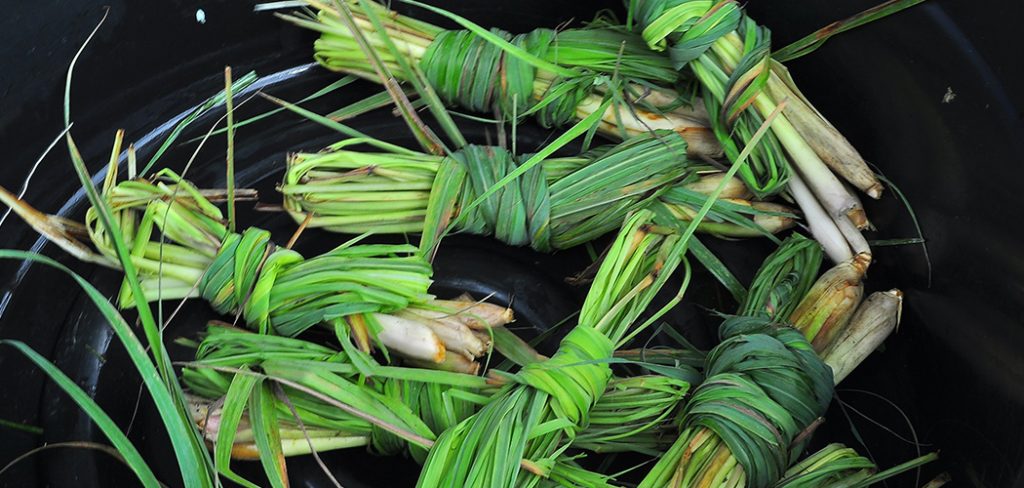Rosemary is a plant or shrub that is usually used as a spice in a lot of dishes, like chicken, steak and other dishes. Rosemary is pretty common, and can be bought in most markets and grocery stores, but knowing how to plant your own rosemary shrub can help you obtain a constant source of fresh and safe rosemary. Likewise, you also need to know when to harvest rosemary. After all, having your own garden of spices and vegetables makes for a more fulfilling dish.
Rosemary usually grows up to two meters tall, which means that his plant does not grow as tall as some other plants. The rosemary leaves are usually thin, and dark green, whose length is not too long as well. They also have multiple stems, and they have a distinct smell that is well-known for the rosemary spice. The flowers of the rosemary shrub usually bloom during spring and summer, though rosemary can also be planted during other seasons.
1. How to grow rosemary
Growing your own plant can be difficult if you do not have the information, knowledge and experience, especially if growing a rosemary plant is the first kind of plant you try to grow yourself. Planting certain spices and vegetables is not necessarily easy, but learning certain skills such as how to grow rosemary can help you start out with a good batch, and hopefully transfer and develop such skills into achieving a well diversified garden full of spices and vegetables to eat.
To grow your own rosemary plant you need to note that rosemary plants grow best in the seasons of spring and summer, when the temperature and weather are both warm. Rosemary plants prefer to grow when there is more heat, over colder temperatures, which is why you can expect them to bloom most during the aforementioned seasons. Being able to plant your own rosemary plant can either be for the use of its leaves for spices, or for ornamental purposes. The leaves of the rosemary are sleek and thin, and make for a great look in any garden, even if the leaves themselves are not used for purposes other than aesthetics.
Rosemary plants are pretty easy to care for, and are not considered complicated in terms of the sunlight, water, and soil they might need in order to grow. To start off, make sure that you obtain the soil that is easily drainable, and is considered to be sandy soil. This allows excess water that has been building up to freely flow through the soil and unto the ground. Next, you need to make sure that the rosemary plant is exposed to sunlight for around six to eight hours, to provide it with environments with warm temperatures.
2. How to cut rosemary for cooking
Cutting plants can be difficult if you have never done it before, since you might now know which parts of the plant to keep, and which parts to get rid of. But for plants like rosemary, learning how to cut rosemary for cooking is necessary if you want to be able to produce great tasting dishes that have rosemary as one of its additional ingredients for added taste.
The rosemary plant itself should be pruned regularly, even if you do not plan on eating some of the spices or using it for other things, since this helps the plant grow healthy and maintains its nourishment. To prune a rosemary plant, you need to do it every so often by removing or cutting the sprigs similar to cutting a normal houseplant. Make sure to limit the amount you trim to only one-third of the entire plant, and to make cuts above the leaf point. Once you have cut the stems and leaves that are no longer fit for remaining on the plant, you can either use them, dry them, or cut them further for cooking. Rosemary is a good addition since it provides an aromatic flavor to the dish. It has a distinct taste, which provides quite a punch. It goes great with chicken and meat.
3. How to dry rosemary
If you have too much of a plant or spice, learning how to dry the rest of it and storing it can be a useful skill. It prevents the parts of the plant that have been harvested from rotting, and it provides you with more options to choose from in terms of how you want to use the remaining spices. Learning how to dry rosemary helps in providing you with more sustainable sources to use for future cookouts. To dry your rosemary, you can start by washing your sprigs and drying them with paper towels after. Then, you should tie them up from the base with kitchen twine, and then hang them up to dry.
This step might expose the rosemary plant to pests and other unwanted bugs, which is why putting them in a paper bag or covering them up helps with protecting them from pests. Drying the rosemary cuts this way can cover up to two weeks. You should check them regularly to see whether or not the rosemary parts you have cut up are dry or not. After this step, you can store them in a container for future use.
Conclusion
Creating your own source of rosemary is as easy as planting and trimming the rosemary plant when needed. Knowing the limits and when it is time to trim the rosemary is key to preserving it for a longer time. Plant maintenance is all about knowing when and how to give the plant the care it needs, such as sunlight exposure and water. Plants usually grow on their own as long as they are properly taken care of, and eventually provide you with a lot of benefits.
For the rosemary plant, it is important to know things such as how to dry them, preserve them, and use them. Learning about essential tips such as when to harvest rosemary is important, especially since rosemary should only be trimmed every so often when stems start to become mature. The best time to harvest rosemary is during the spring or summer, since they grow most actively during these times.

